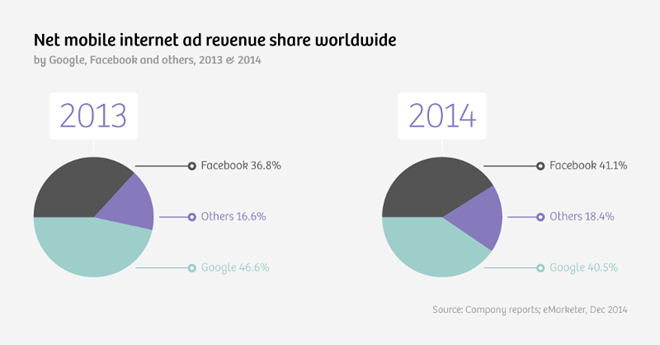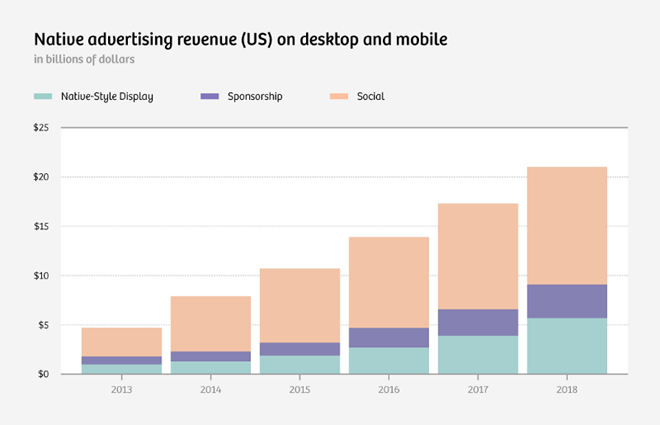"Increasing paid readers is the future of journalism"
"Selling advertising is a short-term strategy, increasing paid readers is the future of journalism" is the title of an article by Ernst-Jan Pfauth, co-founder and editor-in-chief of the Dutch journalism platform De Correspondent, posted on medium.com.
 |
| (Photo: Getty Images) |
In the context of the massive development of adblocker applications, platform dependence and the dominance of Facebook and Google in the mobile advertising market, perhaps never before has the need to “invest” in the relationship with readers been more important for news publishers.
Many news organizations are choosing to sell branded content, or “native ads,” a form of advertising that not only threatens the editorial independence of a newsroom but also affects the relationship with readers. Meanwhile, one news website after another is removing comments on articles, completely blocking readers’ voices instead of investing in building a content-contributing community of both journalists and readers. Damaging the relationship with readers is a definite no-no, yet it seems to be the strategy of many newspapers.
There is a need to change media business models. There is a need to empower journalists and restore reader trust by adopting a subscription model.
In his book, “Trust Me, I’m Lying: Confessions of a Media Manipulator,” marketing expert Ryan Holiday details how online journalism is broken. Most websites have long made money by selling advertising, meaning the more visitors they get, the more advertising money they make. But that makes online journalists prisoners of a system that requires them to generate traffic. They are victims of this business model, paid to write clickbait.
Marketing experts and “media manipulators” like Holiday provide journalists with everything they need to create content that attracts readers while also maintaining their marketing agenda. In the book’s opening pages, Holiday shares a personal experience:
• He designed a controversial billboard for a client and won a good location in Los Angeles.
• He bought a can of spray paint and sprayed it on his own billboard.
• Holiday drove by and took a picture of the spray-painted billboard and sent it to a blogger, who was delighted to post it on his site.
• More popular blogs picked up on the news and republished it. The story went viral.
Of course, this example is not extreme. But imagine what would happen if news sites started following presidential candidates just to attract traffic, which would increase advertising revenue? The CEO of CBS recently told investors that Donald Trump’s outrageous statements are a “phenomenon” for advertising revenue, and he expects Trump to continue to increase the intensity.
It turns out that the advertising model has even changed the political arena and influenced democracies.
The overemphasis on attracting readers and selling advertising is slowly destroying journalism from within. To understand why, let's look at other examples.
Last year, The New Yorker featured Emerson Spartz, a traffic-obsessed and even “viral guy” who excels at making things go viral. His business model is to cover his sites with ads. Originality is not his business model, and copy-pasting content from competing sites that is attracting readers generates good revenue without much effort. Take a look at some of the headlines of popular articles on Dose.com to get a sense of what kind of content Spartz is bringing to the masses:
• 21 Expired Disney Cakes Sold to Children… Horrible
• See what happens when this girl offers to have sex with 100 men
• Watch the 102-year-old former dancer's reaction as she watches her old videos for the first time
Of course, Spartz could have chosen any business model he wanted, and the fact that he was able to build one is admirable. But the problem is that this “Clickbait King” is causing more and more reporters to force their publications to compete with Spartz. They feel the need to follow suit.
Reaching an audience is all well and good, but lowering your journalistic standards to get your story to go viral is not. And that’s what happens when publishers take Emerson Spartz as their inspiration. They focus on traffic and not on building relationships with readers. Their readers are just a group of people who can easily be lured into reading “listicle” articles.
This is a short-term strategy to generate traffic and increase advertising revenue. And once a content producer goes down this path, it is difficult to turn back. This is worrying because the advertising model is increasingly under pressure from the following three major threats.
Threat 1: Ad blockers will become more popular
The growing use of adblockers is putting pressure on advertising revenue. There are now 198 million adblockers used worldwide, and media companies lost an estimated $22 billion in advertising revenue in 2015. The number of adblockers used globally increased by 41% between 2013 and 2014. And according to the latest research, this is just the tip of the iceberg, as some new adblockers are even going further than blocking ads from carriers, not just from the terminal.
Threat 2: Platforms like Facebook will hijack the relationship between readers and media
Many publications and news sites are relying on platforms like Facebook and Snapchat to reach as many users as possible. Sure, these platforms generate traffic, but they also take over the relationship with the reader.
The more Facebook knows about a user, the more precisely it can target ads to that user. And of course, they don’t want users running to other websites. Facebook recently launched Instant Articles, a service that publishes content from many major websites directly on Facebook. The argument for both readers and publishers is that it saves time, because they don’t have to wait for articles to “load” from a third party. But another reason is that readers don’t have to leave Facebook to get all the news.
Publishers have no choice but to accept, as they are increasingly dependent on Facebook for traffic. As a result, they will have to share advertising revenue with Facebook and gradually lose their relationship with readers. And once Facebook users get used to consuming news on the platform, Facebook can start producing its own content (as other platforms have done when their market share is large enough, such as Netflix), and push publishers out of the picture.
Threat 3: The future is mobile, and Facebook and Google own the advertising market
More and more people are accessing websites via mobile devices, and this has created a whole new advertising market, dominated by Facebook and Google.
 |
As a result, newspapers around the world have seen advertising revenue plummet. But they have found an alternative.
Alternatives to traditional advertising that damage reader relationships
Publishers are looking for alternative revenue sources to sustain journalism, and the most common form is “native advertising,” or “branded content.” Alternatively, a news publisher can sell content to an advertiser. Their reporters then create an article or video for a commercial client. The assumption is that readers will read or watch the content—in other words, the ad looks like an article. They also don’t care where readers see the ad, because the advertiser paid for the article or video, so whether it’s viewed on Facebook or on the news publisher’s website makes no difference to revenue.
New research published by BI Intelligence shows that native ads are set to grow exponentially:
 |
| (Source: BI Intelligence) |
The ad-supported content model is proving to be wildly successful, generating billions of dollars. However, the downside to native advertising – even if it’s large and unacceptable – is that it impacts journalistic integrity. While we often see the words “sponsored” or “recommended by [business name]” next to a native ad, studies show that most users are unaware they’re seeing an ad. This is the power and intent of native advertising: people perceive a commercial message as if it were from an independent source. A study by Contently found that 62% of readers felt a news site had lost its integrity when it featured native advertising.
Native advertising undermines journalism. If news sites allow advertisers to take up space that should be reserved for independent journalism, they give up their most valuable asset: editorial independence. And that independence is crucial if journalism is to serve as a watchdog for democracy. Moreover, native advertising is inherently deceptive. A Contently survey found that 48% of readers are offended when an ad is mistaken for an article.
Focus on advertising and you will lose loyal readers.
Not only are news publishers threatening the independence of journalists, they are also putting their relationships with their readers at great risk. This is ironic, because as advertising revenue declines, the relationship with readers becomes more important.
Now, more than ever, is the time to invest in your reader relationships.
But publishers are damaging that relationship. So when advertising revenue isn’t enough to sustain a publication, they can’t ask for sponsorships or charge a fee. They lose their loyal readers. They end up waiting for a little more traffic from Facebook. “Facebook should be 80% of your effort,” the “King of Clickbait” claims.
When readers lose patience with clickbait, they’ll look for an alternative: in-depth, analytical content. A news site that focuses on keeping readers informed, not addicted. A site with a vibrant, knowledgeable community. A site they’re willing to pay for.
Everyone benefits from the toll model.
That is why the subscription model is the future of journalism. It will be rewarded with readers' trust.
The advertising model doesn’t work like that. When you sell advertising, you have to decide how far you want to go in misleading your readers. How big should I make the “sponsored by” line? Should I put this series of photos in a slideshow just to get more views? Should I put a question in the headline to entice readers to click through, even though the article doesn’t really answer it?
Readers know when a site is investing in them or selling them out. When a site invests in its readers, they are willing to invest in it back, by paying a subscription.
As co-founder of the ad-free, subscription-based journalism platform De Correspondent, I can say from experience that I actually feel free to serve the needs of our 43,000 subscribers ($65/year) rather than advertisers. Instead of treating members as advertising audiences, we can focus on serving the issues they care about. Instead of starting with ad-heavy sections like travel or careers, we can make content decisions based purely on the importance of the issue. Instead of chasing pageviews, we chase stories that matter.
We don’t distract our reporters with the need to cover breaking stories; we empower them by asking them to focus on informing readers in the best possible way. We also expect our reporters to invest in the community. Instead of trying to reach as many people as possible, we ask them to encourage readers to share their knowledge. Our reporters actively participate in the comments section of our articles and even find many sources there. Since readers can only post comments by paying, the tone of the comments is civil. Ultimately, everyone feels part of the same community.
The fee model that saved journalism
“The Media Manipulator” Ryan Holiday describes how newspapers became so appealing in the 19th century. Initially, a newsboy on the street needed sensational headlines to sell papers. Trust in the paper was eroded. An editor named Adolph Ochs came up with a solution: He introduced a subscription. From then on, the paper was available on readers’ doorsteps, whether the headlines were sensational or not.
The paywall model allowed journalists to focus on important stories and ignore the cheap stuff. It led to the development of one of the world's leading newspapers: The New York Times. Ochs created an opportunity to move away from easy journalism by introducing paywalls.
Likewise, today’s web-based news publishers can escape the advertising fray. How? It’s simple: focus on serving the needs of your readers, building community with them, and upholding basic journalistic principles./.
According to vietnamplus
| RELATED NEWS |
|---|

